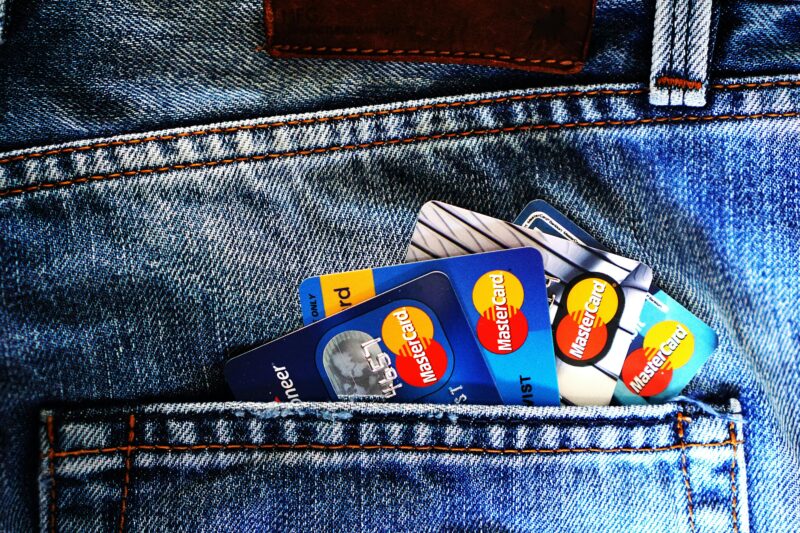How to Stop Living on Credit Cards and Break the Cycle

If you’ve ever wondered how to get out of debt living paycheck to paycheck, you’re not alone. Relying on credit cards to cover essentials can feel like a safety net—until the interest charges turn it into a burden. But there’s a path forward. This guide dives into actionable, strategic steps to help you break free: from budgeting fundamentals to mindset shifts, plus extra income tactics, all designed to deliver real, sustainable change.
1. Build Crystal-Clear Financial Awareness & Tracking
Start by tracking every pound or dollar you spend. Categorise your expenses into essentials (like rent, utilities, groceries) and non-essentials—it’s amazing how quickly habits reveal themselves this way. Tools like spreadsheets, YNAB, Mint, or Goodbudget can help.
This clarity forms the foundation for a solid plan.
2. Create a Realistic, Flexible Budget
Design a plan where every penny has purpose:
- Zero-Based Budgeting: Allocate all income into categories until your balance is zero.
- 50/30/20 Rule: Split income into needs (50%), wants (30%), and savings/debt repayment (20%).
- Or combine approaches—for example, allocate essentials first, then apply zero-based budgeting to what’s left.
The key? Choose a method you’ll actually stick with.
3. Slash Unnecessary Spending (Without Feeling Deprived)
Identify quick wins to free up cash:
- Cancel unused subscriptions and streaming services
- Reduce takeaway meals and focus on cooking at home
- Use coupons, generic brands, and bulk cooking to trim grocery bills
- Compare or negotiate utility, internet, and phone plans
Small changes compound, and they help you shift away from relying on credit cards.
4. Eliminate Credit Card Use & Stop the Debt Spiral
To truly break the cycle, you must pause credit card use while you regain control. Try these tactics:
- Leave your cards at home or remove payment info online
- Use cash or debit only, which forces intentional spending
- Temporarily freeze or lock your cards as a spending barrier
5. Strategise Debt Repayment—Snowball or Avalanche
Choose the method that fits your mindset:
- Debt Snowball: Pay off the smallest debts first for quick wins and motivation.
- Debt Avalanche: Target debts with the highest interest first to save more in the long run.
Either way, use any savings from cutbacks to pay more than the minimum balance.
6. Build an Emergency Fund—Even a Modest Start Helps
An emergency fund is your first line of defence against new debt. Aim initially for a small goal like £500–£1,000 or equivalent, then work toward 3–6 months of expenses. Set up automatic transfers from each paycheck—treat savings like a non-negotiable bill.
7. Increase Your Income (Boost Financial Leverage)
More income accelerates your progress:
- Take on side hustles: freelancing, tutoring, deliveries, and selling unused items.
- Ask for a raise or explore promotion opportunities.
- Use windfalls intelligently: directs bonuses or refunds toward debt or savings.
8. Use Debt Consolidation and Professional Support
If juggling multiple interest rates is overwhelming:
- Explore balance transfer offers (watch for transfer fees and timing).
- Consider personal loans or debt management plans (like those via StepChange or National Debtline)—these can simplify payments and reduce interest.
9. Mindset, Motivation & Accountability
Your “why” matters:
- Set motivating, real goals (e.g., “Clear £3,000 in 6 months”)
- Break milestones into per-paycheck wins
- Use affirmations and visualise progress—inspiration builds momentum
- Find an accountability partner, join forums, or consider peer-support programs like Debtors Anonymous
10. Track Your Progress and Adapt as You Go
Regularly review your plan:
- Check income, expenses, savings, and debt levels monthly
- Adjust your budget based on real-life results
Summary Table
| Strategy | Description |
|---|---|
| Track spending | Gain clarity on where your money goes |
| Build a budget | Use zero-based or 50/30/20 budgeting |
| Cut back spending | Remove non-essential costs and negotiate bills |
| Stop credit card use | Pause usage to halt debt accumulation |
| Focus on debt repayment | Use snowball or avalanche methods |
| Start saving | Build an emergency fund—even small sums count |
| Boost income | Side jobs, raises, freelancing, selling items |
| Consider consolidation | Balance transfers, loans, or debt management plans |
| Stay motivated | Side jobs, raises, freelancing, and selling items |
| Monitor & adjust | Review progress and tweak your plan each month |
Conclusion
Learning how to get out of debt, living paycheck to paycheck, starts with understanding your situation—and it’s entirely achievable with disciplined steps. By tracking expenses, creating a budget, stopping credit card usage, strategically paying down debt, saving even slightly, boosting income, and staying motivated, you can break free from the credit cycle and forge a path toward financial freedom.



